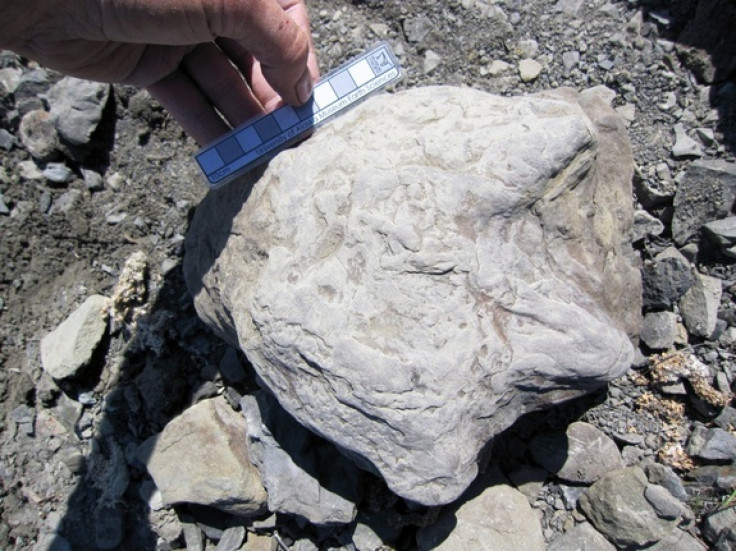The Week In Science: Dinosaur Footprints, Dead Whales And A Lazy Sun

This week in science, we scrutinized the science of “Breaking Bad,” blamed ourselves for climate change and scrutinized an anti-fungal foot cream that could be of use in combating HIV. But there’s a whole lot of other breakthroughs and discoveries that surfaced this week, so here’s a roundup of what we missed:
Researchers found thousands of fossilized dinosaur footprints along the banks of the Yukon River in Alaska. [ABC News]
Free Curiosity! University of California at Berkeley biologist Michael Eisen is a big fan of open access to scientific research. He co-founded the Public Library of Science, a collection of journals that publish papers free for anyone to read. Eisen was irritated by NASA’s decision to publish the first official papers from the Curiosity rover’s mission to Mars behind a paywall in the journal Science. Eisen claims the papers are not subject to copyright protection because they are products of federal government research, and he posted copies of them on his blog. [Nature News Blog; michaeleisen.org]
A group of scientists has linked the deaths of 100 whales off the coast of Madagascar to underwater sonar deployed by the Exxon Mobil Corp. (NYSE:XOM). The major integrated oil-and-gas company used the sonar in 2008 to prospect for oil on the ocean floor. Similar mass deaths of whales have been linked to sonar used by the U.S. Navy. It’s not clear why sonar might cause whales to strand themselves, but a number of researchers think the sonar creates some kind of barrier or wall that the whales flee from. Both Exxon Mobil and the Navy have denied that their sonar causes whale deaths. [CBS News]
Finding people trapped beneath collapsed buildings may be easier than ever thanks to a new device developed at the Jet Propulsion Laboratory. Using powerful radar, the device -- dubbed Finding Individuals for Disaster and Emergency Response, or FINDER -- can detect the minute motions caused by a person’s heartbeat and breathing. [NBC Southern California]
This year is supposed to be the height of our sun’s 11-year cycle of activity, but, so far, it’s been eerily quiet. Scientists who were expecting a bumper crop of sunspots and solar flares in 2013 have found relatively little activity. Even though there isn’t too much activity at the sun’s surface, the cycle is still marching on. During the solar maximum, the sun’s magnetic field executes a flip: The north pole becomes the south, and vice versa. [New York Times]
© Copyright IBTimes 2024. All rights reserved.











